Dear colleagues,
This month we are kicking off a new series where each month we plan to profile major pro teams and leagues (MLS, NBA, NFL, MLB, NHL, NCAA, European soccer, South American soccer, pro rugby, pro tennis, pro cricket, Olympic teams..). The goal for each sports organization is to highlight their favorite technologies, the impact of those technologies in terms of injury reduction, mental health and their approach towards innovation. As part of that each month we will interview a key executive within those sports organizations. Of note, if you are a professional team (club or national team) and would like to get profiled by us, contact us at julien@sportscouncilsv.com
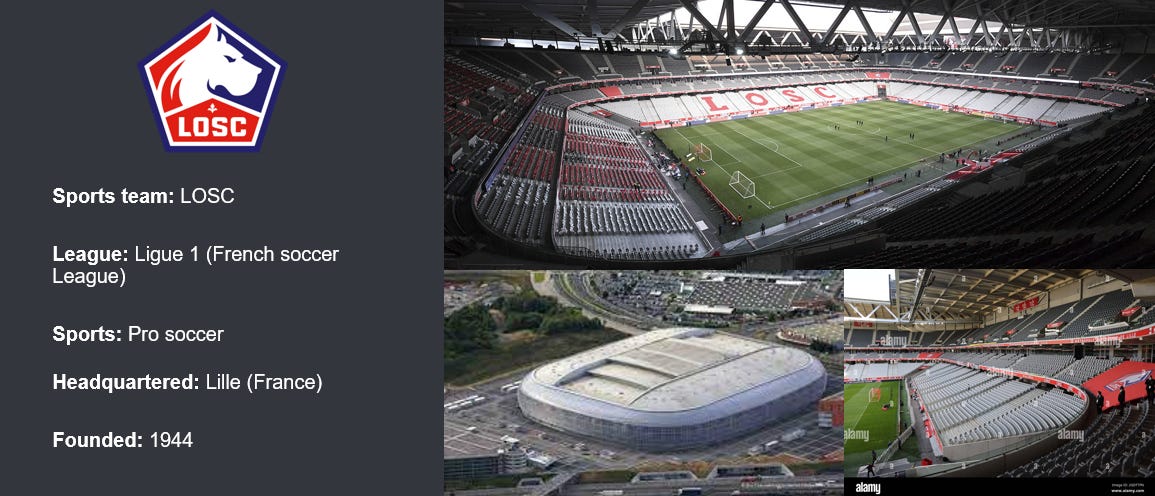
So our first team profile this month is the LOSC a top French soccer team in Ligue 1. Here is some background the LOSC.
Sports team: LOSC
League: Ligue 1 (French soccer League)
Sports: Pro soccer
Headquartered: Lille (France)
Founded: 1944
Website: LOSC
Sports team background: Lille Olympique Sporting Club, commonly referred to as LOSC, LOSC Lille or simply Lille, is a French professional football club based in Lille, Hauts-de-France that competes in Ligue 1, the top flight of French football. Lille has played its home matches since 2012 at Stade Pierre-Mauroy, the fourth-largest football stadium in France. The 50,186-capacity retractable roof venue replaced the club’s previous home of Stadium Lille-Metropole.
Lille was founded as a result of a merger between Olympique Lillois and SC Fives in 1944. Both clubs were founding members of the French Division 1 and Olympique Lillois was the league’s inaugural champions. In domestic football (Ligue 1), the club has won four league titles, six Coupes de France and one Trophée des Champions since its foundation. One of those League titles was against PSG during the 2019/2020 season during the COVID season. Of note, only three teams have managed to beat PSG in the French soccer league ever since PSG got acquired by the Qataris. The two other teams that won the Ligue 1 title against PSG were Montpellier during the 2011/2012 season (the year of the acquisition) and Monaco during the 2016/2017 season. The LOSC also won the Champion trophy against PSG during the 2021/2022 season. In European football, Lille has participated in the UEFA Champions League eight times, reaching the knockout phase twice, competed in the UEFA Europa League on eight occasions and won the UEFA Intertoto Cup in 2004 after finishing as runners-up in 2002.
The club’s most successful period was the decade from 1946 to 1956, in the post-war period, when the team led by managers George Berry and André Cheuva won seven major trophies, including a League/Cup double in 1946, and was known as La Machine de Guerre (French for “The War Machine”). Having won another double in 2011, its fourth league title in 2021 as well as its first French super cup, Lille is the fourth best French club in the 21st century.
Nicknamed Les Dogues (French for “The Mastiffs”), the club has a long-standing rivalry with nearby side Lens, with whom they contest the Derby du Nord.
Here are the favorite technologies used by the LOSC:
- Force plate / Nordbord / Groinbar: Vald
- GPS: Statsports
- EMG sensors: Strive
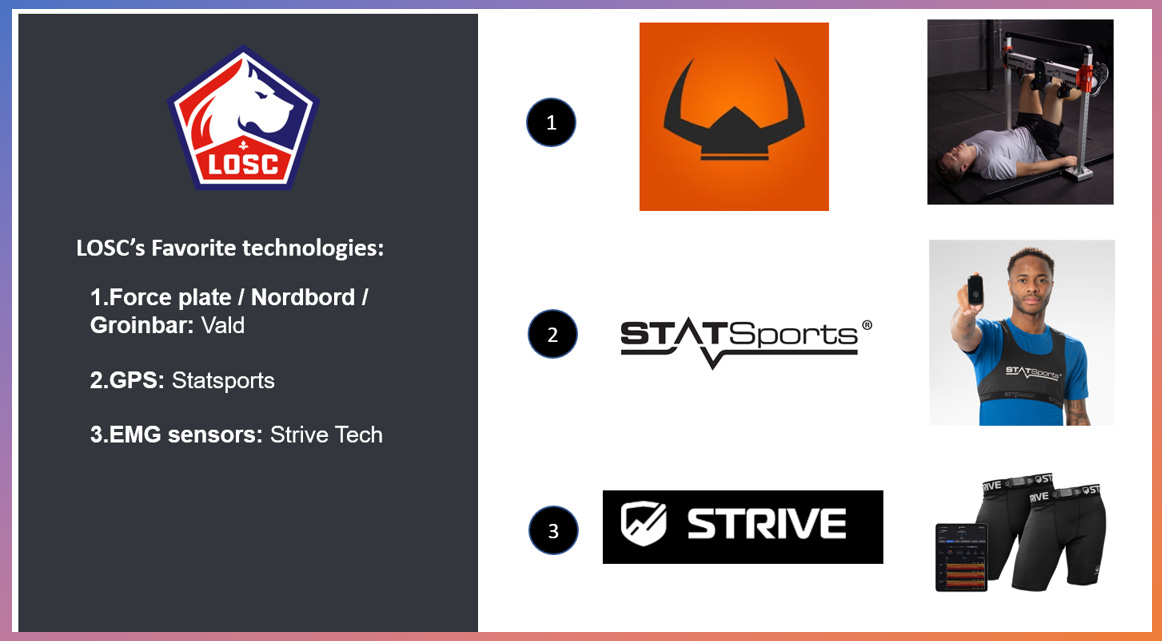
As part of this week’s profile on the LOSC, we interviewed Martin Buchheit, the head of performance at the LOSC. Martin is also a sports performance consultant for various clubs. He also publishes research papers and books and leads the research efforts at Kitman Labs (together with Derek McHugh and Maxime Settembre). He is also the cofounder of HIITscience, a company that provides online classes and podcasts, and the editor of Sport Performance & Science Reports, an on-line, free-access and review-free journal for sport science practitioners. Finally, Martin is also the author of EGOals: Exercising your ego in high-performance environments; the book he wishes he could have read 20-yrs ago.
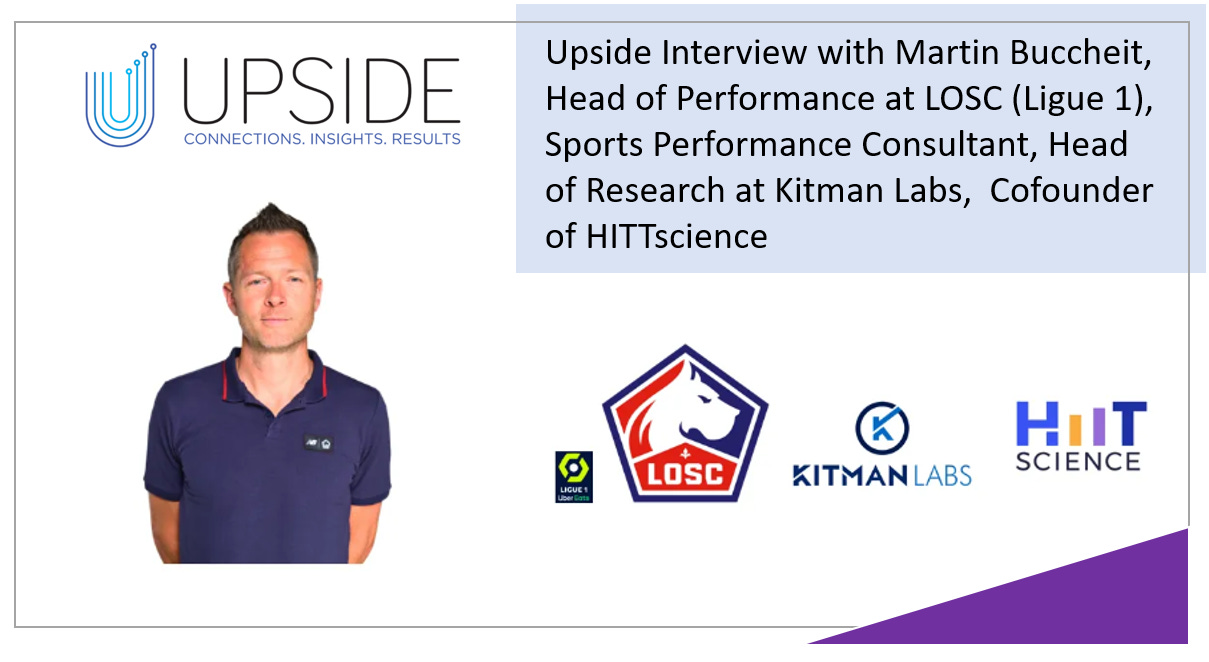
?Show Notes: Through this interview, we touched on his background, his role at the LOSC, his philosophy when it comes to injury reduction. Then we talked about his favorite technologies, and some of the best tools that he has been using to help reduce injuries.
?Best Quotes: Here’s some of the key discussion points and best quotes from our conversation with Martin:
- On his background:
- “ I started 20 years ago in the performance sports science world. I have been involved myself as an athlete, but as a failed athlete. I never made it as an athlete at the highest level. I was playing handball, which is a popular sports in France. And maybe the fact that I couldn’t really make it as an athlete, as a professional player, that really pushed me on the other side with my studies”.
- “I did my Masters and PhD, and I really pushed myself on the science and research side of things. And this led me to different positions around the world. I have been a conditioning coach for a number of professional teams. I also worked in Qatar at the Aspire academy, which was an amazing experience”.
- “Then I landed a big job at PSG as the head of performance, which was the job of my life (..) And after 6 years in Paris, I started my consultancy and where I am currently working for the LOSC as their head of performance. But I am also consulting for other clubs while still doing research on the side. So I am really trying to always merge the two worlds, the practitioner world and the world of research with research data in order to inform the practitioners”.
- On his role as the head of performance at the LOSC:
- “I physically work in Lille at the LOSC 3, 4 days a week because there are things where you need to be present and you need to balance what needs to be done in person and what can be done remotely”.
- “At the LOSC I don’t really have much of an operational hands-on job. So I’m really relying on my colleagues and all the people from the multidisciplinary teams at the LOSC anywhere from the conditioning coaches, the nutritionist, the guy looking after the data as well, the physio, or the doctor. I am trying to support everyone with their different roles, whether it’s about bringing data driven information, which is something that I can do remotely”.
- “I’m also involved in the staff development to help the staff members with their personal growth. So it’s a pretty transverse role where I work with my colleagues at the academy to make sure that we align the practices between the pros and the academy. So this is what I like to do. I am really in the middle, where I am trying to support the players and the staff”.
- On the complexity to reduce players’ injuries and the fact that number of injuries are not decreasing due to the increased demand on players and other factors:
- “First of, thank you for making the distinction between injury prevention and injury reduction because I think it’s important to stress out that we as practitioners are always trying to do our best to reduce the occurrence of injuries but also to reduce the duration of the return to play”.
- “When it comes to all of the strategies to try to reduce injury incidents, this is probably one of the most complex areas of our job (..) there are some studies showing that despite the continuous increase in resources, human technology knowledge, there are still more injuries today”.
- “There are more injuries in absolute, yes but if you look at the pace of the game, the game is faster today. There are more games, and there are more demands so the number of injuries is not going down but perhaps the number of injuries is not increasing as much as we thought because of the parallel increasing demands”.
- On the importance of proper training to help reduce the risk of injuries:
- “Before talking about prevention as a whole, and all the typical strategies, the first injury prevention or reduction tool that needs to be put in place is proper planning. And sometime we forget that we are going straight into the level two”.
- “ So proper planning is critical because the planning definitely dictates the stress that is put on a player’s body and how the player with response. And then when the stress is too much, they break. It’s pretty simple. When we say proper planning, it is about having progressive increase in load, making sure that you have alternates in load, that there are some phases of recovery, and that there are some phases of overload and so on”.
- This is the basic principle of proper planning, but for various reasons, this is not always done properly, given the stressful and sometime a bit chaotic context of elite sport”.
- “So the more we can prepare, and plan better, the better. That’s the start of our injury reduction strategy”.
- On the importance of prioritizing the macrocycle between matches to enable players to rest:
- “The latest research (Please check the studies here and here) that I published through my job at Kitman lab was about looking at how optimally periodizing the macrocycle (i.e., training days between matches)”.
- “What we found out was that often having a day off, at match-day day plus two rather than at day plus one, is actually associated with less injuries because it just allows athletes to do a better recovery at day plus one. You can also compensate for those who have not played on day plus one, and then everyone can rest. That’s an example where research can assist us into thinking better about the planning side of the things”.
- “The second aspect of this prevention / reduction strategy is once the planning is fixed, there are things that we can control. For example, are we going to train for half an hour or an hour? Are we adding training content? This is in our hands. And this is where we need to do our best”.
- On the importance of supporting players to help them better cope with the calendar fixtures and adopting the proper recovery strategies:
- “The second aspect is about how we can support players to better cope with these calendar fixtures, and this is where adopting a recovery strategy is important. So we are looking at their sleep, the nutrition, so they can recover better from those games or heavy trainings”.
- “And on the other side, we have to support them. This is part of the prevention work that we are doing. For example we have to make sure that we maintain those players as healthy as we can in terms of looking at their profile, checking their flexibility, their mobility, and make sure that they’re functional”.
- On the importance of technologies to help reduce players’ injuries and improve players’ performance:
- “It’s part of our ongoing monitoring, both in terms of load and response to load. We also use it to profile players, which is used to program individualized prevention work and performance enhancements interventions”.
- On the fact that there is not one single “magical’ tool to help reduce injuries out there but it is important to use a combination of various tools:
- “I think we will all agree that there has never been one tool that will just almost “magically” reduce injuries”. But I think in terms of tools, we can maybe integrate both technologies to monitor the accumulation of neuromuscular fatigue with machine learning or a data management systems”.
- On the need to build an injury reduction strategy based on three levels:
- “This overall injury reduction strategy should be based on three levels. The first level is based on the planning and programming. Then the second level is based on the prevention or the work that is done to help players better support the load. And then the third level is about using tools, technologies and even data, machine learning and advanced modeling systems to get insights into the risk of injuries”.
- On the fact that most clubs are still not aligned on those three levels:
- “From my experience, the biggest challenge is to be able to align those three levels, or those three components of the overall injury risk strategy. I have yet to really find an organization, a club, where those three parts are really embedded together”.
- “And to be able to have a collaboration between those 3 levels (or people), and have at least someone that oversees the three levels is always very difficult. It is difficult to put that in place in the context of elite football where you have a lot of elements that are changing whether it’s on the technical or the performance side”.
- “And that’s probably where we definitely need to see progress. We need to make sure that everyone collaborates in areas such as the decision around the content, the training, and what is offered to players. There needs to be a blend of those three levers, meaning not only the programming, not only the prevention but also the information from the technology. So everything needs to be put together and this is definitely where we all need to progress to work better all together”.
- On his favorite technologies at the LOSC:
- “Our favorite technologies at the LOSC are: (1) The force plate / Nordbord / Groinbar from Vald. The fact that everything is integrated together, the automatic detection of exercises/tests, the cloud, the API with other platform make it really useful”.
- “(2): GPS system from Statsports. GPS systems are the core of our work, and it’s both simple and reliable. (3): Strive. Strive offers a short which provides live EMG data. This is a new technology that we use for exercise selection and rehab”.
- When deciding to adopt a new technology, what are the most important factors (e.g. research driven product, product quality, reliability, affordability…):
- “We start with why we may need it and how it is going to help us with. Then obviously validity is key, and finally, how easy and practical the technology is to use/implement with players, and the manpower needed behind to collect and analyze the data”.

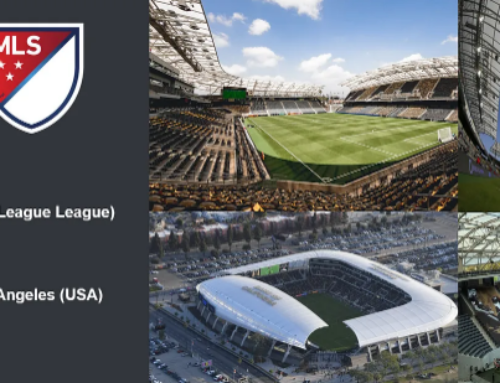
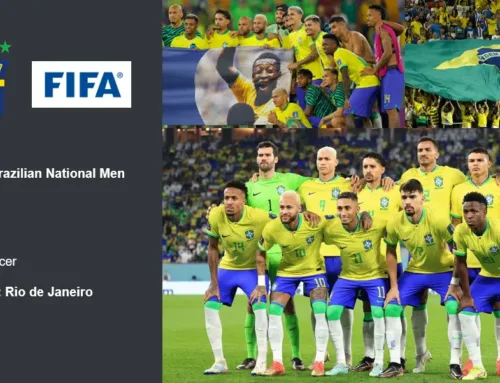

Leave A Comment
You must be logged in to post a comment.